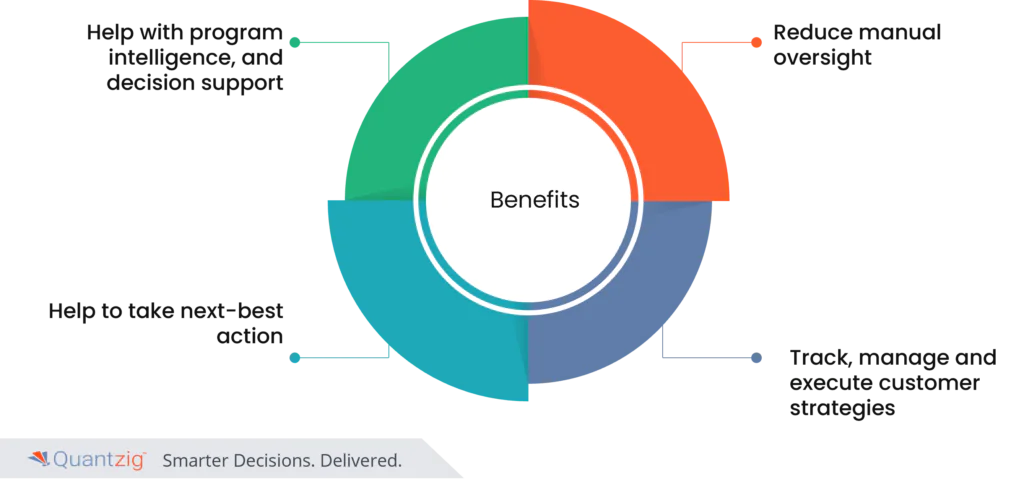Table of Contents
Introduction
In today’s rapidly evolving business landscape, understanding and meeting customer expectations is paramount to success. This article delves into the fascinating realm of behavioral science and its pivotal role in enhancing the customer experience. As consumers become increasingly discerning, organizations must go beyond traditional methods and embrace the insights offered by behavioral science to create meaningful and lasting connections with their clientele. By delving into the intricacies of human behavior, this article explores how companies can not only meet but exceed customer expectations.
We will explore various facets of behavioral science, from understanding decision-making processes and emotional triggers to designing personalized experiences that resonate with customers on a deeper level. Join us on this journey to uncover the powerful tools and strategies that can revolutionize the way businesses interact with their customers, fostering loyalty, satisfaction, and sustainable growth in today’s competitive marketplace. Whether you’re a seasoned business professional or an entrepreneur looking to gain a competitive edge, this article will provide invaluable insights into leveraging behavioral science to improve the customer experience.
Importance of Behavioral Science to Improve Customer Experience
- Leading brands consistently secure and retain their positions at the top of their respective industries by delivering unparalleled customer experiences. These brands excel in crafting experiences that are not only exceptional but also deeply personalized, catering to individual customer needs and preferences at every touchpoint along their journey with the brand. By investing in comprehensive customer understanding, these companies glean insights into consumer behavior, motivations, and pain points that allow them to create tailored interactions that resonate on a profound level. This commitment to personalization extends across all phases of the customer journey, from initial awareness and consideration to purchase, post-purchase support, and loyalty-building efforts. Consequently, these brands establish strong emotional connections with their customers that foster brand loyalty and advocacy. In a competitive marketplace, this customer-centric approach is a powerful strategy because it enables top brands to maintain their category leadership and stay ahead of the curve.
- Effective customer experience management empowers organizations to proactively identify and address both risks and opportunities within the customer journey. By closely monitoring and analyzing customer interactions and feedback, businesses can pinpoint potential pain points, bottlenecks, and areas of improvement. This proactive approach not only helps in mitigating risks, such as customer dissatisfaction or churn but also highlights opportunities for enhancing the customer experience. Winning in the moments that matter to customers involves seizing opportunities to exceed expectations, create memorable interactions, and build lasting relationships. When an organization can identify these critical touchpoints within the customer journey, they can tailor their strategies and resources to ensure a positive and memorable experience. Whether it’s resolving an issue swiftly, providing exceptional support during a purchase decision, or delivering personalized recommendations, effective customer experience management enables businesses to shine precisely when it matters most to their customers. This not only boosts customer satisfaction but also drives customer loyalty and advocacy, ultimately contributing to the long-term success of the organization.
The reasons for implementing behavioral science to improve customer experience:
- Transforming an organization into a customer-centric operation is a strategic endeavor that necessitates commitment from both leadership and practitioners. Leadership plays a pivotal role in setting the vision, priorities, and culture of customer-centricity. They must champion this approach, allocate resources, and lead by example. On the other hand, practitioners, who interact directly with customers, are crucial in executing the vision. Their insights, dedication, and ability to implement customer-centric practices on the ground are fundamental to success. A harmonious collaboration between leadership and practitioners ensures alignment, fosters a customer-focused culture, and drives the necessary changes across the entire enterprise to deliver exceptional customer experiences.
- When customer journeys lack cohesion and data remains unconnected, the result is a fragmented understanding of customer motivations. This fragmentation can lead to inaccurate assumptions and misguided actions that do not resonate with the customer. In essence, the absence of a unified view of customer data creates blind spots, preventing businesses from accurately comprehending the customer’s needs and preferences. This can lead to irrelevant or misdirected marketing efforts, product development, and customer support, ultimately diminishing the overall customer experience. To truly serve customers effectively, it’s essential to bridge these data gaps and gain a holistic view of their journeys and motivations.
Key benefits of behavioral science to improve customer experience:

Customer Experience (CX) Analytics plays a pivotal role in enhancing operational efficiency and improving customer strategies by infusing intelligence, decision support, and next-best-action capabilities into an organization’s processes.
Firstly, CX Analytics harnesses the power of data to provide deep insights into customer behavior and preferences. By analyzing customer interactions, feedback, and historical data, it uncovers patterns and trends that enable businesses to make informed decisions. This eliminates the need for manual oversight and guesswork, saving valuable time and resources.
Secondly, CX Analytics offers decision support by presenting actionable recommendations based on the data analysis. It guides organizations in understanding what actions to take to optimize the customer experience. This empowers teams to make data-driven choices and align their efforts with customer-centric goals.
Lastly, with next-best-action capabilities, CX Analytics helps in personalizing interactions with customers. It suggests the most relevant and timely actions to take with each customer, increasing the likelihood of a positive outcome. This level of personalization fosters customer satisfaction and loyalty.
In sum, CX Analytics streamlines operations, making it easier to track, manage, and execute customer strategies efficiently. It transforms businesses into more customer-centric organizations capable of delivering exceptional experiences on a scale.
What our capability does:
Our CX/UX optimization framework is a comprehensive and data-driven approach that empowers businesses to improve their customer experience and maximize return on investment (ROI).
Firstly, by analyzing a diverse set of omnichannel signals, including customer satisfaction surveys, touchpoint interactions/feedback, voice of customer data, and customer journey data, the framework creates a holistic view of the customer experience. This thorough data analysis allows for the identification of key factors influencing CX and their causal relationships, providing CX specialists with valuable insights into what drives customer outcomes.
Secondly, the framework initiates with experience-based behavioral segmentation of customers. This segmentation helps in understanding different customer personas and their unique preferences, allowing for tailored strategies. It also identifies risks and opportunities at both touchpoint and internal customer levels. By pinpointing areas where the customer’s experience may be lacking or excelling, organizations can prioritize efforts to address pain points and capitalize on strengths.
Lastly, the framework guides the development of activation strategies and next-best actions. Armed with a deeper understanding of customer behavior and the factors impacting CX, organizations can craft targeted initiatives that enhance the customer journey. These strategies not only improve customer satisfaction but also contribute to better ROIs as they are based on data-backed insights and align with customer preferences.
In essence, this CX/UX optimization framework is a powerful tool that brings together data, segmentation, risk/opportunity assessment, and actionable strategies to drive continuous improvement in the customer experience, resulting in more satisfied customers and a stronger bottom line.
Why should a client opt for our offering?
- Our approach to CX/UX optimization stands out from standardized, off-the-shelf solutions. Instead, we offer bespoke strategies that are meticulously crafted in collaboration with our clients’ stakeholders. This customization ensures that the solutions are finely tuned to address unique needs and challenges, making them highly actionable. Moreover, our process integrates intelligence derived from client-specific data and insights and enhances their effectiveness. Furthermore, our solutions are future-proofed by aligning them with the internal enterprise roadmap, guaranteeing that they remain relevant and adaptable to evolving customer demands and industry trends. In essence, our tailored approach ensures that CX/UX optimization is not just a one-size-fits-all solution, but a strategic partnership designed for sustained success.
- Our offerings encompass a range of consumption mechanisms to cater to diverse user needs and seamlessly integrate with existing processes. These options include simulation and testing environments, versatile workbenches, and fully automated Next Best Action (NBA) engines. Simulation and testing facilitate experimentation and fine-tuning, while workbenches offer flexibility for users to adapt the system to their specific requirements. Additionally, our automated NBA engines streamline decision-making processes, ensuring timely and data-driven actions. This versatility allows organizations to choose the approach that best aligns with their objectives and workflow, promoting efficiency and effectiveness in customer-centric initiatives.
Conclusion:
In conclusion, leveraging behavioral science to enhance the customer experience is a strategic imperative for businesses in today’s competitive landscape. By delving into the intricacies of human behavior, organizations can gain profound insights into customer motivations, decision-making processes, and emotional triggers. Armed with this knowledge, they can design personalized and emotionally resonant interactions that foster lasting customer relationships. This approach not only elevates customer satisfaction and loyalty but also drives sustainable growth and competitive advantage. As businesses continue to invest in understanding and applying behavioral science principles, they are poised to revolutionize their customer experiences, setting the stage for long-term success in a customer-centric world.


